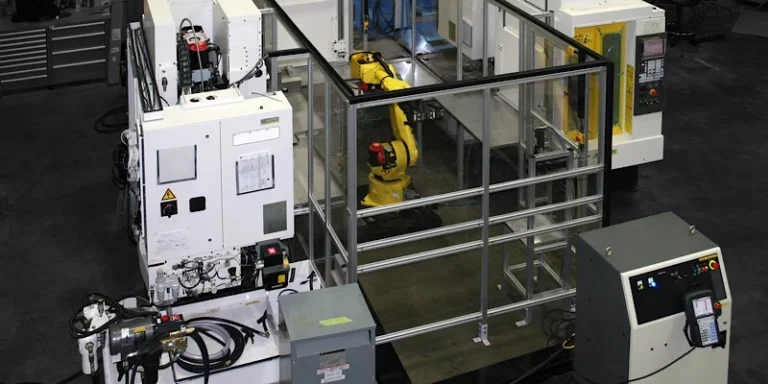Medical injection molding is the primary method for manufacturing medical supplies. This process involves melting medical-grade plastics and then reshaping and molding them into the desired forms for medical equipment.
This additive manufacturing technique produces robust and durable medical injection parts with high-quality surface finishes and precise dimensional accuracy. Additionally, given that many medical instruments are designed for single use, this method is ideal for large-scale production, which helps lower the production costs associated with injection molding.
Why Use Plastics For Medical Injection Devices?
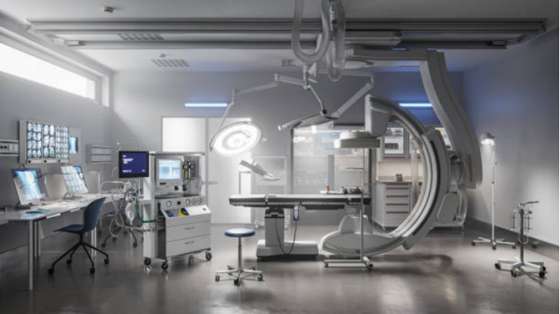
Any material used for manufacturing medical devices must meet industry standards. Thermoplastics, particularly those classified as ‘medical-grade plastics’, comply with all FDA regulations, making them an ideal choice for producing medical injection devices.
Furthermore, plastic polymers are generally more cost-effective than metals and alloys while offering comparable durability and mechanical properties. Therefore, using plastics to manufacture medical devices is a practical approach to reducing healthcare costs without sacrificing quality.
Additionally, plastics are more versatile during the manufacturing process and in the usability of the final products. Unlike metals, plastics are inert materials, making them a superior option for components that will come into contact with organic tissues.
Advantages Of Injection Molding For The Medical Industry
Injection molding is an automated process that rapidly produces parts and components for medical equipment. Its benefits surpass those of similar additive manufacturing technologies, such as plastic extrusion, and include:
1. Compliance with Industry Standards
Components produced through medical injection molding are well-suited for the medical industry because they adhere to regulatory standards. The FDA has established a series of requirements concerning safety, sterility, and cleanliness that all medical equipment must meet.
Unlike metals and other materials, these plastics are easy to clean and sterilize, resistant to contaminants, and require less finishing work, making them ideal for medical applications.
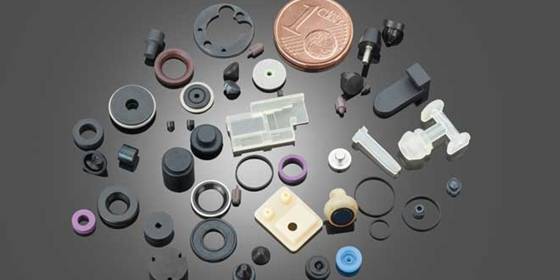
2. Cost Effectiveness
Medical plastic molding is an automated and cost-effective method, particularly for large-scale productions. As a computer-controlled process, it requires minimal labor, thereby reducing the cost per part. Additionally, the injection molding process is faster and allows for the reuse of molds, further decreasing the production costs of medical equipment.
3. Compatibility With a Wide Range of Materials
The injection molding process provides machinists with a wide range of materials to choose from, including plastics, fibers, and composites. However, since our focus is on plastic injection molding for the medical industry, the material selection is already narrowed down to medical-grade plastics. Even so, the process remains compatible with virtually all types of medical-grade plastics.
4. High Precision and Accuracy
The medical industry demands exceptional dimensional accuracy for its devices, as they interact with blood and various internal structures of the human body. Even a slight deviation of a few millimeters can be detrimental to the patient.
Injection molding is an ideal method for achieving the highest level of dimensional accuracy and tight tolerances in plastic fabrication. Additionally, as an automated process, it minimizes human involvement, thereby reducing the likelihood of errors caused by external interference.
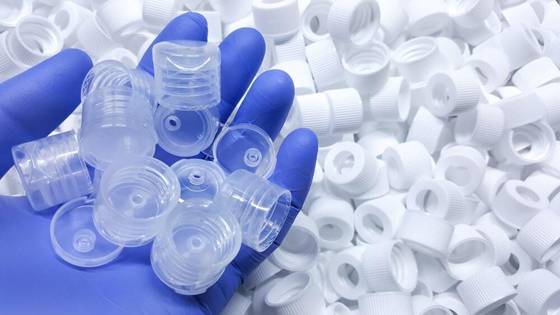
5. High Volume Reproducibility
Many medical products, such as syringes, gloves, and masks, are designed for single use. Therefore, a fabrication process with high-volume repeatability is essential, and this is one of the primary advantages of injection molding.
With this technique, once the mold is created, thousands of identical parts can be produced before any maintenance is needed. A typical aluminum mold, the most common type used in injection molding, can endure thousands of production cycles.
6. Little or No Material Wastage
Like any manufacturing technique, medical injection molding generates some waste in the form of excess scraps during the fabrication process. However, a key advantage of this technique is that it allows you to regrind and melt these excess materials, which can then be reused for producing other parts. As a result, the waste generated from fabricating medical prototypes is almost negligible.
Different Kinds Of Injection Molding Processes For Medical Gadgets
Let’s briefly examine some injection molding processes utilized in the fabrication of medical devices.
Plastic(Regular) Injection Molding
Injection molding entails melting plastic polymers at high temperatures and then reshaping or molding them into the desired form using an aluminum or steel die mold. This process is especially beneficial to the medical industry because it takes place under sanitary conditions. The elevated temperatures used to melt the plastics ensure that they are free from contaminants and microbes that could potentially harm patients’ health.
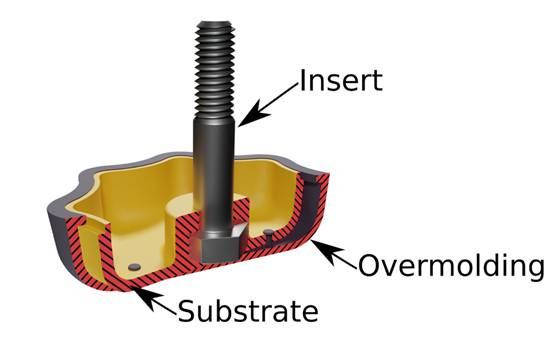
Overmolding
Overmolding is a specific type of injection molding that involves molding one or more components over an already molded and cured structure, known as the substrate. This process is often referred to as two-shot molding because it requires at least two steps, resulting in a longer production cycle. Despite the extended cycle time, this technique is highly valuable in plastic manufacturing, particularly for creating handles and components that need a firm grip.
Insert Molding
Insert molding is similar to overmolding in that a secondary component is molded over an already molded part, known as the insert. However, unlike overmolding, insert molding is a single-step process because the substrate (insert) is a pre-existing structure. Additionally, this technique is not limited to plastic parts; the inserts can be made
Liquid Silicone Injection Molding
This process involves heating silicone to a molten state and then remolding it into the desired shapes of the medical product. Silicone is a common plastic polymer well-suited for use in the medical industry.
However, since silicone molds are not as durable as aluminum or steel molds, silicone injection molding is typically only suitable for producing small quantities of medical parts, particularly in the initial stages of medical prototyping and product development.
Different Medical Grade Plastics For Medical Injection Molding
There are various engineering plastic polymers suitable for medical injection molding. These plastics are primarily thermoplastics rather than thermosets due to their superior performance.
1. Polyetheretherketone (PEEK)
PEEK is a widely used engineering-grade thermoplastic known for its exceptional resistance to harsh environments, including radiation, high temperatures, chemicals, and wear and tear. It is primarily used for creating medical and surgical implants.
Furthermore, PEEK ensures impeccable dimensional stability, even under stress. Its superior mechanical properties make it an excellent choice for manufacturing medical devices. Additionally, PEEK is compatible with injection molding and other manufacturing techniques used in the fabrication of medical equipment.
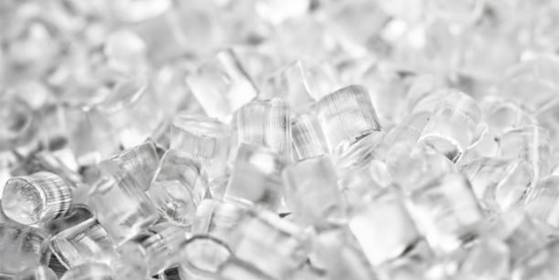
2. Polyethylene (PE)
Polyethylene is a common medical-grade plastic polymer composed of thousands of ethylene polymers, resulting in a material with high tensile strength and rigidity.
PE’s compatibility with biological tissues and its resistance to harsh environmental conditions, including sterilization, make it a valuable plastic for medical injection molding. It is suitable for manufacturing joint prostheses, connectors, tubing, pharmaceutical containers, and more.
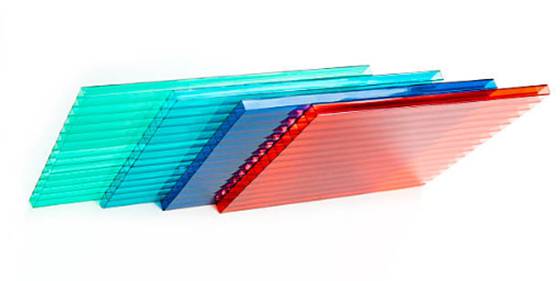
3. Polycarbonate (PC)
Polycarbonate is a reinforced engineering thermoplastic formed from the condensation of bisphenol A and phosgene. Despite its transparent appearance, it boasts excellent mechanical properties, including toughness, flexibility, and resistance to abrasion, breakage, and temperature variations.
Additionally, polycarbonate is highly compatible with body tissues, a common characteristic of medical-grade plastics. It is suitable for manufacturing a variety of medical plastic injection parts, such as transparent masks, protective gear, oxygenators, and more.
4. Polypropylene (PP)
Polypropylene is another common plastic polymer used in injection molding, created from the polymerization of multiple propylene units. It exhibits remarkable toughness and resistance to cracking, radiation, impact, temperature variations, and wear and tear.
These properties make polypropylene an excellent material for manufacturing components in the healthcare sector. It is ideal for producing connectors, tubing, syringes, knee and hip replacements, respirators, and other medical devices.

5. Silicone
Silicone is a chemically inert compound resembling synthetic rubber, known for its outstanding mechanical properties and compatibility with biological tissues. It is the preferred medical-grade plastic polymer when flexibility is a priority.
Silicone is suitable for manufacturing a wide range of products and devices, including catheters, cosmetic products, contact lenses, breast implants, drug delivery systems, connectors, and tubing. Additionally, silicone is exceptionally cost-efficient for producing medical gadgets.
6. Polystyrene (PS)
Polystyrene is another high-quality engineering-grade plastic suitable for manufacturing medical injection parts. Unlike most other thermoplastics discussed earlier, it has minimal flexibility but offers excellent mechanical properties and compatibility with body tissues.
Polystyrene is resistant to harsh conditions, ensuring high dimensional stability, which is crucial for all medical components. It is commonly used for manufacturing Petri dishes, culture trays, and other diagnostic parts.
What Materials Are The Available Medical Injection Parts?
Various thermoplastics are used for fabricating hospital and medical injection parts, with each polymer being better suited for specific applications. Let’s explore the criteria to consider when selecting medical-grade plastics.
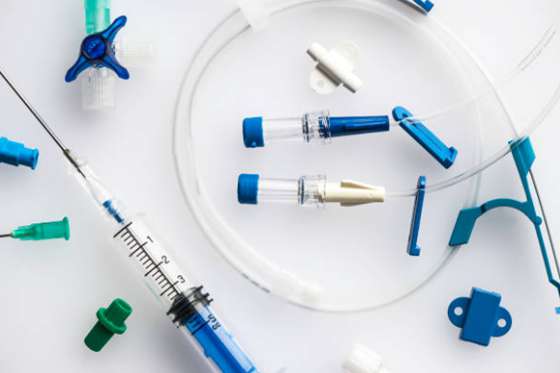
1. Industry (FDA) Regulations
When designing components for medical equipment, the primary consideration is compliance with the relevant authority, primarily the FDA. There are specific guidelines and requirements that every medical instrument must meet before it is deemed eligible for use by the general public.
These standards include compatibility with biological tissues and the ability to withstand extreme physical and chemical conditions. Other criteria are also subject to these regulations. Therefore, if the plastics meet all FDA regulations, they are suitable for fabricating medical plastic injection parts.
2. Strength and Durability
Plastics used for manufacturing medical injection parts must exhibit notable mechanical properties such as strength, rigidity, and durability. When designing components for the healthcare sector, it is crucial to avoid fragile plastics that can break easily. Instead, opt for impact- and shatter-resistant thermoplastics that will fulfill their intended purpose for extended periods.
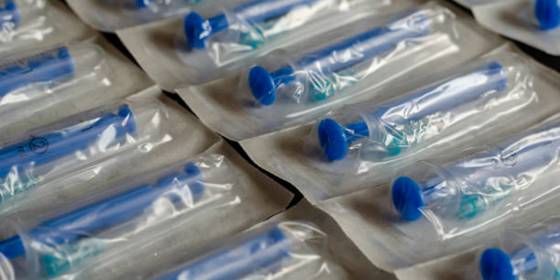
3. Suitability of the Environment Within the Organism
Some medical products, such as prosthetics and surgical implants, will come into direct contact with organic tissues. Therefore, plastic polymers used for such fabrications must be inert and not interfere with normal body functions. They must remain compatible with the internal body environment even after extended use.
4. Ability to Withstand Sterilization Conditions
Many medical devices need to be sterile, free of any contaminants and microorganisms that could be harmful to patients. The sterilization process often involves exposing these medical gadgets to harsh conditions, such as high temperatures, radiation, or chemicals.
Therefore, the plastic polymers used for creating instruments that require sterilization must be able to retain their dimensional accuracy even after exposure to these harsh environments.
5. Selection of Molding Method
The injection molding method is another important criterion to consider when selecting the right medical plastics. For example, when working with silicone, it is best to use liquid silicone injection molding for fabrication.
Other plastic injection molding techniques include insert molding, micro molding, ultrasonic bonding, overmolding, and more. It is essential to ensure the appropriate process is used for your specific fabrication needs.
6. Consider General Usage
The purpose of the fabricated components is another crucial factor to consider when using plastic polymers for medical injection molding. For example, medical equipment such as gloves, masks, respirators, tubing, catheters, and syringes are typically designed for single use.
Therefore, these components should be made from materials that are flexible, lightweight, transparent, and easy to sterilize, while also being cost-effective. Using too many materials or expensive options for such disposable products would be impractical and costly for the manufacturer.
Applications Of Plastic Injection Molding In Medical Devices
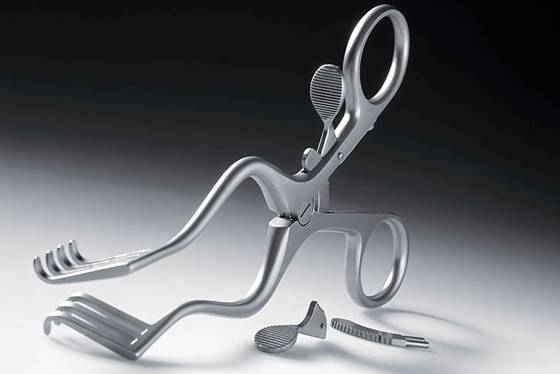
Given the various advantages discussed above, it is clear that injection molding is a highly efficient and effective manufacturing technique for the medical industry. It is a seamless process that offers high precision and accuracy, even for large-volume production. This makes it the preferred method for many companies that fabricate components for the medical and pharmaceutical sectors.
The process is commonly used for manufacturing the following medical plastic injection parts:
- Knee and hip joint replacements
- Various surgical implants and equipment
- Essential components such as blood bags, syringes, catheters, connectors, tubing, respirators, masks, and protective gear
- Housings, casings, and enclosures for sophisticated medical devices like MRI and ECG machines
- Laboratory components, including Petri dishes, healers, test tubes, etc.
- Dental X-ray equipment
- Orthopedic devices
- Pharmaceutical containers and packaging
AS Prototypes: Your Expert in Injection Molding Services
Are you in need of an expert in fabricating medical plastic molding services? Look no further. At AS Prototypes, we offer professional services in rapid injection molding and other manufacturing technologies, including CNC machining, 3D printing, mold tooling, and more.
Our team has extensive experience in injection molding services and can produce both aluminum molds and sophisticated steel molds, tailored to your machining needs. Additionally, we provide professional advice on selecting the right material for your medical injection parts, ensuring you receive a high-quality and cost-effective end product.
Simply upload your CAD files, and we will provide you with a free DfM analysis and insights on how to carry out your fabrication.
Conclusion
Medical injection molding is a cost-effective method for producing high-quality products with exceptional mechanical and chemical properties. This technique allows for the straightforward fabrication of simple medical injection parts, as well as the creation of complex components that require tight tolerances.
FAQs
What are medical-grade plastics?
Medical-grade plastics are polymers used in the manufacturing of medical products and devices. These plastics are biologically inert and have undergone rigorous testing and stability studies to ensure their safety and compliance with industry standards. They exhibit excellent mechanical, physical, and chemical properties. Examples include polyethylene, PEEK, polypropylene, and ABS.
What is an injection-molded medical device?
Injection-molded medical devices refer to medical devices manufactured using injection molding techniques. This process involves heating plastic materials to a molten state and then molding them into specific shapes that fit the desired designs, resulting in components used in various medical gadgets.
What types of medical products can be produced using injection molding?
Injection molding can be used to fabricate virtually all plastic medical equipment, as it meets all FDA safety and structural stability regulations. This includes simple items like Petri dishes, syringes, tubing, and blood bags, as well as complex structures such as implants, housings, and casings for large medical devices, prosthetics, and more.


